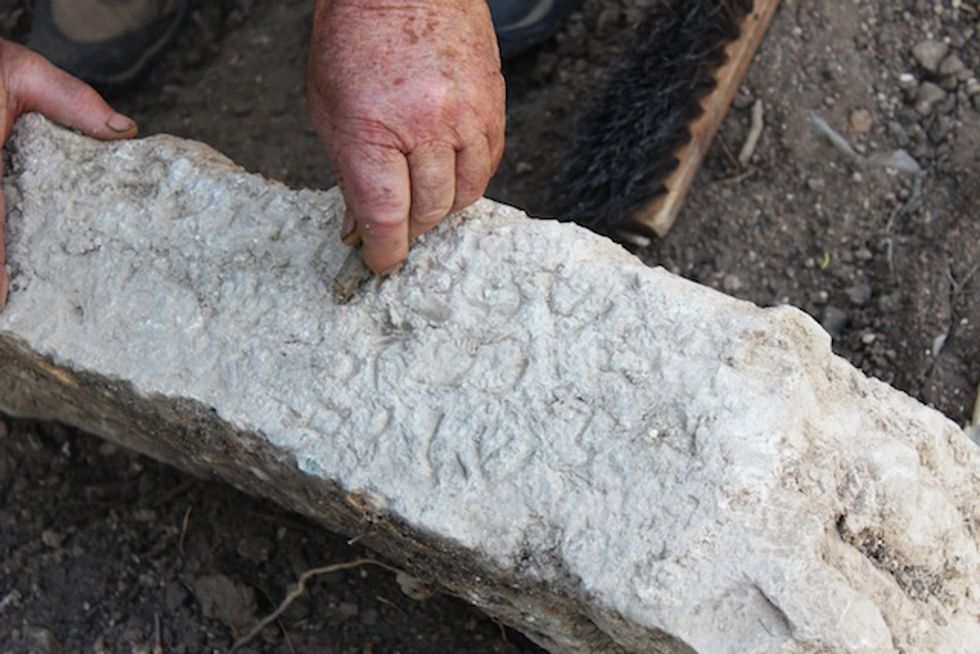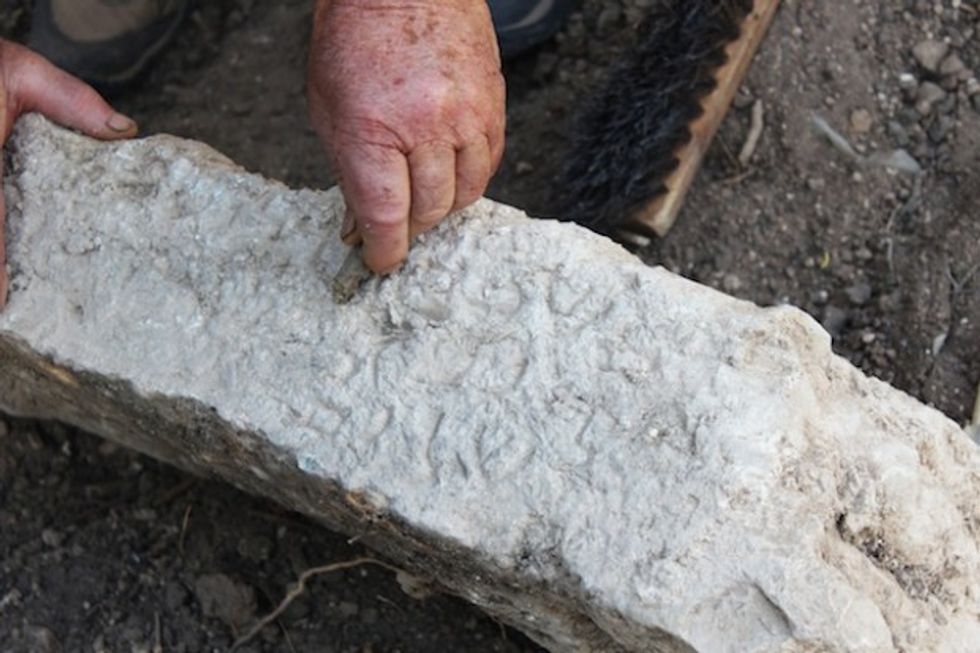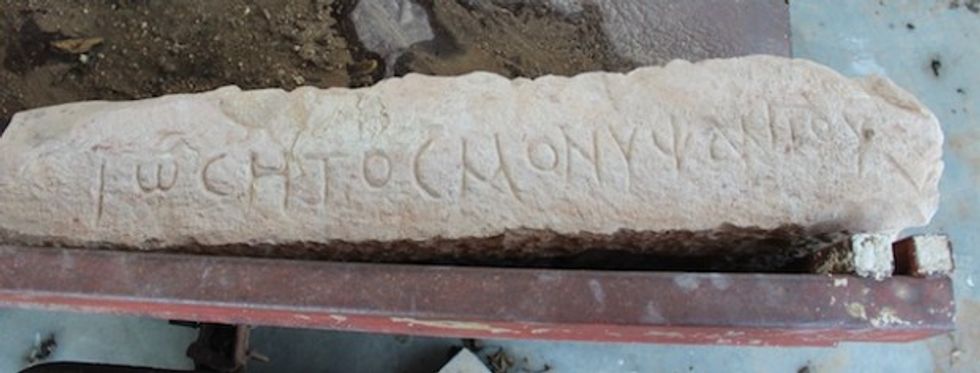
An archaeologist cleans one of the Aramaic inscriptions found in Israel's Galilee region. (Miki Peleg/Israel Antiquities Authority)

Archaeologists have uncovered three 1,700-year-old Aramaic and Greek inscriptions in northern Israel honoring men who were described as “rabbis,” but mystery remains over the identity of the religious leaders.
The Israel Antiquities Authority on Wednesday announced the discovery of the epitaphs in the cemetery of the ancient city of Zippori, also known as Sepphoris, which once served as the capital of Galilee.

Researchers said they were able to discern three Aramaic words and one Greek word in the funerary inscriptions. The Aramaic words translate to “the Tiberian,” “forever” and "rabbi," while the Greek inscription mentions the name Jose, a common name for Jews at the time.
Motti Aviam of the Kinneret Institute for Galilean Archaeology said in a statement announcing the discovery that one of the inscriptions was particularly surprising.
“One of the surprises in the newly discovered inscriptions is that one of the deceased was called ‘the Tiberian,’" Aviam said. “This is already the second instance of someone from Tiberias being buried in the cemetery at Zippori.”

Aviam suggested that Jews from around Galilee may have been brought for burial to Zippori due to “the important activity carried out there by Rabbi Yehuda Ha-Nasi,” the second century rabbi also known as Judah the Prince who was the editor of post-biblical Jewish oral traditions known as the Mishnah.
On the other hand, Aviam also posited that “the Tiberian” descriptor in the epitaph might simply have meant that the man originally came from Tiberias, reflecting the combination of science and hypothesis that is part of archaeological study.
The Aramaic word “le-olam,” that is, “forever,” was seen for the first time inscribed in Zippori, the researchers said.
“The term le-olam is known from funerary inscriptions in Bet She‘arim [in the Galilee] and elsewhere and means that the deceased’s burial place will remain his forever and that no one will take it from him. Both inscriptions end with the Hebrew blessing 'shalom' [peace],” Aviam said.
Though the men were referred to as “rabbis,” the archaeologists said they were not sure what precisely "rabbi" meant at a time when many Torah sages were studying in the city.
The Greek inscription discovered featured the name Jose, which the Antiquities Authority noted was a common Jewish name at the time.
In contrast with Zippori, epitaphs found in Tiberias in Galilee were primarily written in Greek, the researchers said. Though Aramaic was the everyday spoken language in the area, some Jews spoke and read Greek.
The Antiquities Authority offered further background on Zippori in a press release announcing the discovery:
Zippori was the first capital of the Galilee from the time of the Hasmonean dynasty until the establishment of Tiberias in the first century CE. The city continued to be central and important later on and was where Rabbi Yehuda Ha-Nasi resided and compiled the Mishnah. The Jewish life in the city was rich and diverse as indicated by the numerous ritual baths (miqwe’ot) discovered in the excavation; while at the same time the influence of Roman culture was also quite evident as reflected in the design of the town with its paved streets, colonnaded main roads, theater and bathhouses. The wealth of inscriptions from the cemeteries attests to the strong Jewish presence and the city’s social elite in the Late Roman period.
Bible scholars and historians believe that Aramaic, once the spoken language in the area, was the language of Jesus.
The Palestinian Authority frequently denies the Jewish connection to Holy Land, accusing Israel of “Judaizing” Jerusalem and instead promoting the notion that Palestinians were in the area first.